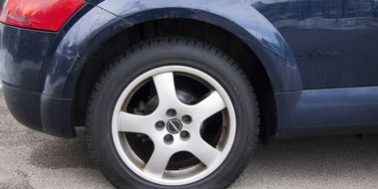While it’s not a job that most of us have to do very often, knowing how to change a tyre is a skill that we should all have. Yes, our roadside assistance can help, but if you are in a poor reception area your mobile may not work or you may end up having to wait a long time if there are more urgent calls that they are called out to attend.
With that lack of skill and practice come the fear of doing a bad job or of even trying. But if you follow our guide you can’t go too far wrong – it’s actually not that tricky a job to do. All you need are the right tools – which you should have in your car – and the desire to give it a go. We are pretty sure you’ll be surprised that you can do it so quickly!
What you need
You will need the following:
- A spare tyre that has enough tread and is inflated correctly
- A jack for lifting the car up
- A wrench for undoing and re-doing up the bolts
- Your vehicle’s manual
- A chock, if available
How to change a tyre
Follow our step-by-step guide below:
- As soon as you realise you have a flat tyre, pull over somewhere safe. Avoid motorway hard shoulders and aim for a turn off to a quieter spot if you can.
- Turn on your hazard lights to show other motorists that you are in trouble and need to pull over.
- Look for a flat, hard surface to pull over onto. Avoid grass verges or loose or uneven ground.
- Apply the handbrake and place it in first gear or park if you are driving an automatic. Place the chock diagonally behind the wheel you are about to replace. If you don’t have a chock a rock should work.
- Make sure all passengers are out of the vehicle and well clear of it.
- Get your tools and spare tyre out and keep them within arm’s reach of your working area.
- Check your manufacturer’s manual to see where you need to apply the jack. Only ever place it where your manual tells you otherwise you risk damaging your vehicle.
- Lift the car with the jack until it is just on its springs and no further – yet!
- Once it is partially lifted, loosen the wheel nuts but don’t remove them yet. Turn the wrench anticlockwise to loosen.
- Now you can lift the car further, until it is just off the ground.
- Remove the wheel nuts in a diagonal order. Keep the wheel steady using your foot or knee so that it doesn’t turn while you are using the wrench. Leave the top nut until last so that you are better placed to catch the tyre if it comes off.
- Remove the tyre and replace it with the spare.
- Replace the wheel nuts in reverse order to how you removed them – top nut first, followed by a diagonal placement until all are in place. At this point you are putting the nuts on by hand, you shouldn’t be using the wrench.
- Do not fully tighten them but lower the vehicle down until the springs catch again and then tighten fully.
- Once they are tightly in place you can fully lower your vehicle and carefully remove the jack.
Easier that you thought, isn’t it? Remember, if you have replaced your tyre you should take your car into your mechanic for the flat to be repaired, or replaced if necessary, and for them to check that everything is in order and that your vehicle is safe.
For help, advice, and repairs our Double Dee Autos team is here and available to help whenever you need us. Give us a call on 020 8460 3040 to book in a repair or for help with any questions you may have.

